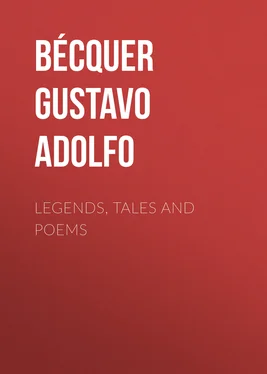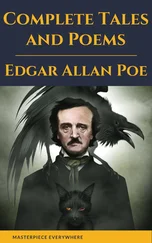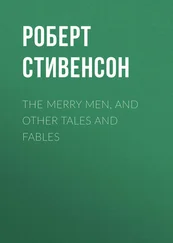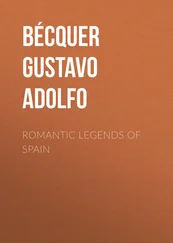Gustavo Bécquer - Legends, Tales and Poems
Здесь есть возможность читать онлайн «Gustavo Bécquer - Legends, Tales and Poems» — ознакомительный отрывок электронной книги совершенно бесплатно, а после прочтения отрывка купить полную версию. В некоторых случаях можно слушать аудио, скачать через торрент в формате fb2 и присутствует краткое содержание. Жанр: foreign_prose, literature_19, foreign_antique, на английском языке. Описание произведения, (предисловие) а так же отзывы посетителей доступны на портале библиотеки ЛибКат.
- Название:Legends, Tales and Poems
- Автор:
- Жанр:
- Год:неизвестен
- ISBN:нет данных
- Рейтинг книги:5 / 5. Голосов: 1
-
Избранное:Добавить в избранное
- Отзывы:
-
Ваша оценка:
- 100
- 1
- 2
- 3
- 4
- 5
Legends, Tales and Poems: краткое содержание, описание и аннотация
Предлагаем к чтению аннотацию, описание, краткое содержание или предисловие (зависит от того, что написал сам автор книги «Legends, Tales and Poems»). Если вы не нашли необходимую информацию о книге — напишите в комментариях, мы постараемся отыскать её.
Legends, Tales and Poems — читать онлайн ознакомительный отрывок
Ниже представлен текст книги, разбитый по страницам. Система сохранения места последней прочитанной страницы, позволяет с удобством читать онлайн бесплатно книгу «Legends, Tales and Poems», без необходимости каждый раз заново искать на чём Вы остановились. Поставьте закладку, и сможете в любой момент перейти на страницу, на которой закончили чтение.
Интервал:
Закладка:
[Footnote 1: Article on Gustavo Adolfo Becquer, by Narciso Campillo, in La Ilustración Artística, pp. 358–360]
Shortly after the matriculation of young Becquer, the College of San Telmo was suppressed by royal orders, and the lad found himself in the streets. He was then received into the home of his godmother, Doña Manuela Monchay, who was a woman of kind heart and much intelligence. She possessed a fair library, which was put at the disposal of the boy; and here he gratified his love for reading, and perfected his literary taste. Two works that had considerable influence upon him at this time were the Odes of Horace, translated by P. Urbano Campos, and the poems of Zorrilla. He began to write verses of his own, but these he later burned.
"In 1849," says Señor Campillo, "there were two noteworthy painters in Seville, whose studios were open to and frequented by numerous students, future rivals, each in his own imagination, of the glories of Velasquez and Murillo. One of these studios, situated in the same building as the Museo de Pinturas, was that of D. Antonio Cabral Bejarano, a man not to be forgotten for his talent, and perhaps also for his wit, the delight of those who knew him. The other, situated in an upper room of the Moorish alcázar de Abdelasis , near the patio de Banderas , was directed by D. Joaquin Dominguez Becquer, a brother and disciple of D. Jose, Gustavo's father."[1]
[Footnote 1: Narciso Campillo, loc . cit.]
In spite of this relationship, Gustavo Adolfo, at the age of fourteen, entered the studio of Bejarano. There he remained for two years, practicing the art of drawing, for which he had a natural talent. He then came under the instruction of his uncle, who, judging that his nephew was even better qualified for a literary than for an artistic career, advised him to follow the former, and procured for him a few Latin lessons. Meanwhile Gustavo continued to enlarge his poetical horizon by reading from the great poets and by the contemplation of the beauties of nature. With his friend Campillo he composed the first three cantos of a poem entitled La Conquista de Sevilla , and with him he wandered about the beautiful city of his birth and dreamed such dreams as the one with which this Introduction begins.
Gustavo's godmother, who was a woman in easy circumstances and without children or near relatives, would doubtless have bequeathed to him her property had he fulfilled her wishes and settled down to an honorable mercantile life. But the child, who had learned to draw and to compose almost before he could write, and who had always paled before the simplest problem of arithmetic, could not reconcile himself to such a life. The artist within him rebelled, and at the age of seventeen and a half, feeling the attraction of the capital strong upon him, he bade farewell to the friends of his youth and set out to seek for fame and fortune. It was in the autumn of 1854 that Becquer arrived in Madrid, "with empty pockets, but with a head full of treasures that were not, alas, to enrich him." Here he encountered an indifference that he had not dreamed of; and here he remained in the shadow of oblivion, eking out a miserable existence of physical as well as mental suffering, in utter loneliness of spirit, until he was joined in 1856 by one who came to be his lifelong friend and first biographer—Ramón Rodriguez Correa, who had come to the capital with the same aims as Becquer, and whose robust health and jovial temperament appealed singularly to the sad and ailing dreamer. The new-found friend proved indeed a godsend, for when, in 1857, Gustavo was suffering from a terrible illness, Correa, while attending him, chanced to fall upon a writing entitled El caudillo de las manos rojas, tradición india . Charmed by its originality in form and conception, he urged his friend to publish it. Becquer acquiesced, and the story was accepted and published by La Crónica . The joy of this first success, and perhaps the material aid that resulted, must have had a great deal to do with Gustavo's speedy recovery.
A short time after this he entered with his friend Correa the office of the Dirección de Bienes Nacionales as copyist, at the munificent salary of some $150 a year. The employment was decidedly contrary to his taste, and to amuse his tedium he used often to sketch or read from his favorite poets. One day, as he was busy sketching, the Director entered, and, seeing a group about Gustavo's chair,—for the young artist's sketches were eagerly awaited and claimed by his admiring associates,—stole up from behind and asked, "What is this?" Gustavo, suspecting nothing, went on with his sketch, and answered in a natural tone, "This is Ophelia, plucking the leaves from her garland. That old codger is a grave-digger. Over there…" At this, noticing that every one had risen, and that universal silence reigned, Becquer slowly turned his head. "Here is one too many," said the Director, and the artist was dismissed that very day.
It cannot be said that he received the news of his dismissal regretfully, for he had accepted the position largely to please a sympathetic friend. Slight as was the remuneration, however, it had aided him to live; and when this resource was removed, Gustavo was again obliged to depend upon his wits. His skill with the brush served him in good stead at this time, and he earned a little money by aiding a painter who had been employed by the Marquis of Remisa to decorate his palace, but who could not do the figures in the fresco.
In 1857, together with other littérateurs , Becquer undertook the preparation and direction of a work entitled Historia de los Templos de España .[1] Like so many of the author's plans, this work remained unfinished; but from the single volume that appeared can be seen how vast was the scope of the work, and how scholarly its execution. Gustavo is himself the author of some of the best pages contained in the volume, as, for example, those of the Introduction and of the chapters on San Juan de los Reyes. He is likewise the author of many of the excellent sketches that adorn the work, notably that of the portada . These sketches, as well as others published elsewhere, show how eminent his work as artist would have been, had he decided to cultivate that field instead of literature.
[Footnote 1: The complete title of the work is Historia de los Templos de España, publicada bajo la protección de SS. MM. AA. y muy reverendos señores arzobispos y obispos—dirigida por D. Juan de la Puerta Vizcaino y D. Gustavo Adolfo Becquer. Tomo I, Madrid, 1857. Imprenta y Estereotipia Española de los Señores Nieto y Compañía. ]
Essentially an artist in temperament, he viewed all things from the artist's standpoint. His distaste for politics was strong, and his lack of interest in political intrigues was profound. "His artistic soul, nurtured in the illustrious literary school of Seville," says Correa, "and developed amidst Gothic Cathedrals, lacy Moorish and stained-glass windows, was at ease only in the field of tradition. He felt at home in a complete civilization, like that of the Middle Ages, and his artisticopolitical ideas and his fear of the ignorant crowd made him regard with marked predilection all that was aristocratic and historic, without however refusing, in his quick intelligence, to recognize the wonderful character of the epoch in which he lived. Indolent, moreover, in small things,—and for him political parties were small things,—he was always to be found in the one in which were most of his friends, and in which they talked most of pictures, poetry, cathedrals, kings, and nobles. Incapable of hatred, he never placed his remarkable talent as a writer at the service of political animosities, however certain might have been his gains."[1]
Читать дальшеИнтервал:
Закладка:
Похожие книги на «Legends, Tales and Poems»
Представляем Вашему вниманию похожие книги на «Legends, Tales and Poems» списком для выбора. Мы отобрали схожую по названию и смыслу литературу в надежде предоставить читателям больше вариантов отыскать новые, интересные, ещё непрочитанные произведения.
Обсуждение, отзывы о книге «Legends, Tales and Poems» и просто собственные мнения читателей. Оставьте ваши комментарии, напишите, что Вы думаете о произведении, его смысле или главных героях. Укажите что конкретно понравилось, а что нет, и почему Вы так считаете.












